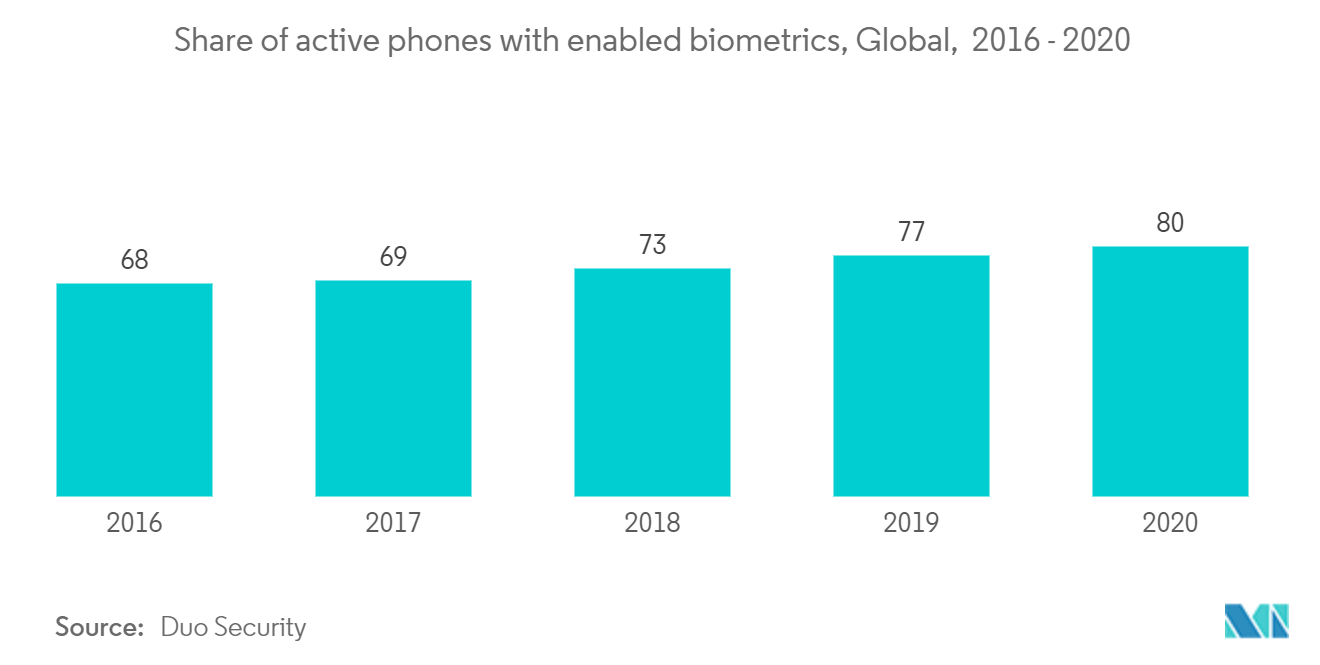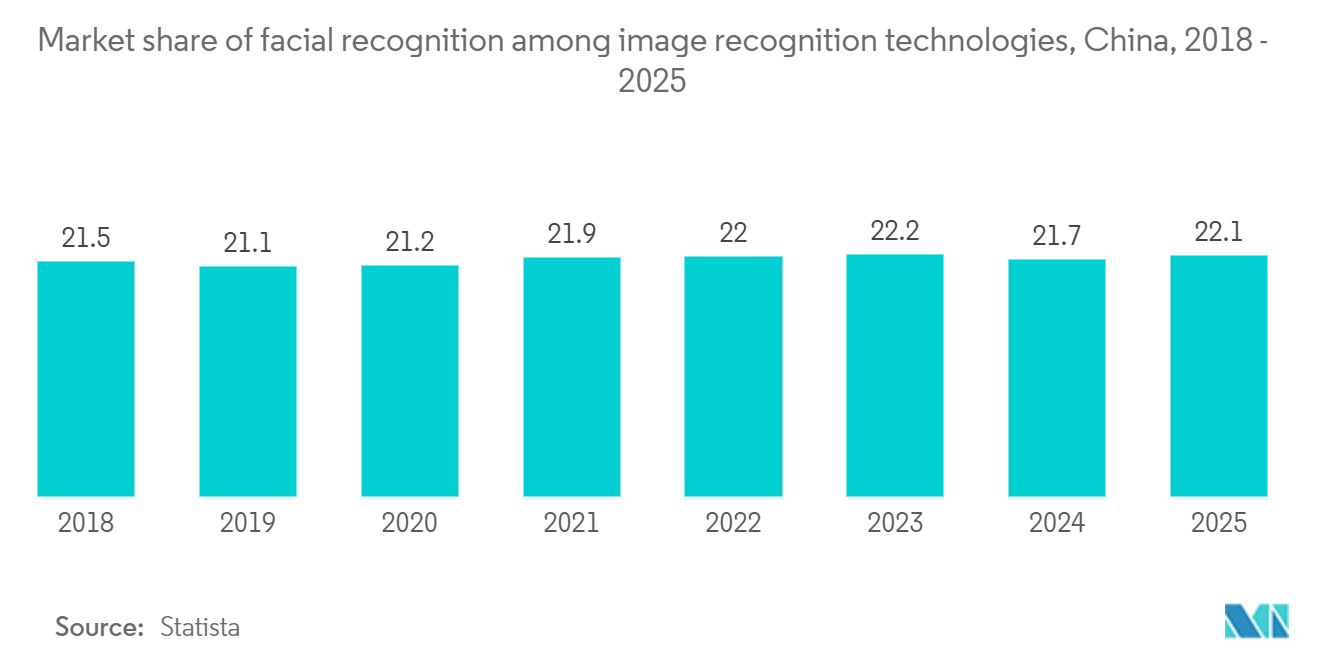Market Trends of India Access Control Hardware Industry
This section covers the major market trends shaping the India Access Control Hardware Market according to our research experts:
Biometric readers expected to have the highest growth rate in future
- Biometrics is one of the most rapidly increasing perimeter security solutions. Biometrics allows identifying a person's physical traits to offer regulated physical access to infrastructure. This technology is increasingly adopted in government institutions, manufacturing plants, power plants, military establishments, and businesses. Furthermore, speech and face recognition are non-contact, non-intrusive, and easy-to-use biometrics technology. The contactless way of identifying and authenticating drives individuals to invest more money in biometric readers.
- Furthermore, with the growing popularity of online transactions, businesses must have an authentication system that provides secure and quick access to information. Furthermore, single-factor authentication methods require the user to validate his identity using only one factor that matches. These variables are expected to drive growth in the biometric reader market by 2027.
- The increasing utilization of smartphones throughout the world, as well as the growing integration of biometric systems with IoT devices, are expected to fuel the growth of the Biometrics reader market (Access Control Hardware Market). For Instance, India introduced a new Product - a biometric prisoner management app.
- According to The Shillong Times, India's Tura district jail has established the 'Eprison' web app to save prisoners' biometric data and communicate it with other correctional facilities, the judiciary, and police. According to the article, Tura is the fourth facility to launch the app. The app also provides information on convicts' patient records, court appearances, and other facts. According to an official, the technology decreases government workloads, fights fraud, and speeds up information processing. The Eprison app's functional components include prisoner and visitor management systems and police information.

COVID-19 created more growth opportunities in adoption of facial recognition technologies
- As investments in face recognition technologies increase and mature technologies, we see facial recognition usage increasing in some cases, including new ones. The COVID pandemic has proven to be an essential driver here.
- The COVID-19 pandemic also leads to facial recognition systems, combined with other biometric techniques. As expected, digitization and digitalization will accelerate in several areas because of the pandemic, and some will inevitably see increasing usage of face recognition technologies.
- During the COVID-19 pandemic, Many government organizations and private companies have begun releasing enhanced facial recognition technology to detect elevated temperatures in a crowd or flag citizens not wearing a face mask. This information is then fed into apps to alert users in the area of the personal health information of others to establish whether they have been within the proximity of infected patients.
- In retail and e-commerce sector has been actively adapting face recognition technology. Previously, customers had to pay bills by QR code, credit card, or cash, but now they can scan their faces on smart devices. This allows for a more secure and user-friendly payment system.
- The adoption of new technologies is growing; the focus is often on artificial intelligence, machine learning (mainly deep learning), and computer vision technologies that enable matching images from cameras with images in databases. With the help of advanced technologies that enhance complex facial recognition systems.


